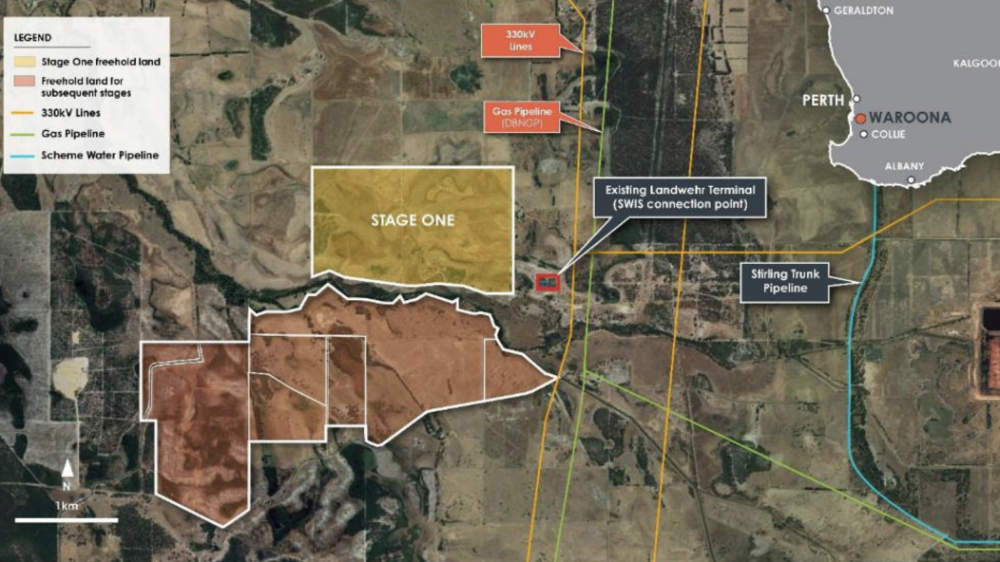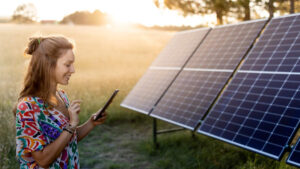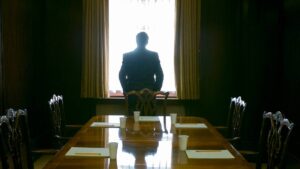Frontier Energy prunes Waroona capex by 7pc as focus turns to project financing

Frontier Energy’s updated DFS cuts Waroona’s capex by 7% to $283m while larger battery will maximise reserve capacity benefits. Pic: Getty Images
- Frontier Energy’s updated DFS for its Waroona renewable energy project reduces capex by 7% to $283m
- Updated plan includes larger 4.75-hour duration battery to maximise reserve capacity benefits
- Company now focusing on project financing with multiple strategies to ensure optimum results
Special Report: Frontier Energy has enhanced the attractiveness of its Waroona renewable energy project after releasing an updated definitive feasibility study (DFS) that reduces capex by 7% to $283m.
Notably, the updated DFS assumes nil value for frequency control essential system services (FCESS), highly conservative large-scale generation certificate (LGC) pricing and no account for recent positive changes to the reserve capacity structure, all of which are expected to positively impact financial returns.
Frontier Energy (ASX:FHE) noted that the lower capital cost for Stage One of the project, which combines a 120MWdc (megawatts of direct current) solar facility with an integrated 4.75-hour duration 80MW/380MWh lithium-ion phosphate (LFP) battery, is due to a reduction in the cost of solar panels, batteries and switchyard.
This is based on pricing received from vendors and contractors ready for construction, granting the company with the confidence it needs to proceed.
Under the updated DFS, Waroona Stage One will deliver average annual revenue of $65m and average annual EBITDA of $57m during the first decade of operation.
Post-tax payback has been estimated at 6.1 years while internal rate of return and net present value, both measures of profitability, have been forecast at 15.4% and $244m respectively.
Stage One is also development ready with all major approvals in place and an access contract executed with Western Power for connection onto the South West Interconnected System (SWIS), which is WA’s main electricity grid.
There is also plenty of room for expansion as Stage One uses just a third of the company’s 868-hectare landholding.

Strong economics confirmed
“Our updated DFS reconfirms strong economics for the Waroona project and again highlights the unique opportunity Frontier presents for investors, as the only pureplay renewable energy developer on the ASX, with near-term exposure to the rapidly growing electricity market in Western Australia,” chief executive officer Adam Kiley said.
“The Waroona project remains one of the most advanced renewable energy projects in WA, with an approved connection onto the SWIS and other key development approvals and permits in place.
“We updated the DFS to reposition the project prior to advancing funding discussions for its development. Pleasingly, we have benefited from cost reductions for key equipment, decreasing capex by $21 million or 7% compared to the original DFS.”
He added that the larger 4.75-hour duration battery will allow more energy to be sold when prices were at their peak, providing greater flexibility and also ensuring the company maintains maximum reserve capacity benefits for longer.
The larger battery, which will be charged during the day when there’s an oversupply of electricity generated by solar panels (often rooftop solar), extends the maximum reserve capacity payment to 8 years.
Financing
Kiley noted the company was now focused on project financing and would run multiple funding strategies in parallel to ensure the optimal solution is available for development.
This is expected to consist of a combination of debt financing and equity solutions with FHE having previously said that non-dilutive solutions such as bonds, equipment-supplier financing and the federal government’s Capacity Investment Scheme were being considered as options.
This article was developed in collaboration with Frontier Energy, a Stockhead advertiser at the time of publishing.
This article does not constitute financial product advice. You should consider obtaining independent advice before making any financial decisions.
Related Topics
UNLOCK INSIGHTS
Discover the untold stories of emerging ASX stocks.
Daily news and expert analysis, it's free to subscribe.
By proceeding, you confirm you understand that we handle personal information in accordance with our Privacy Policy.








